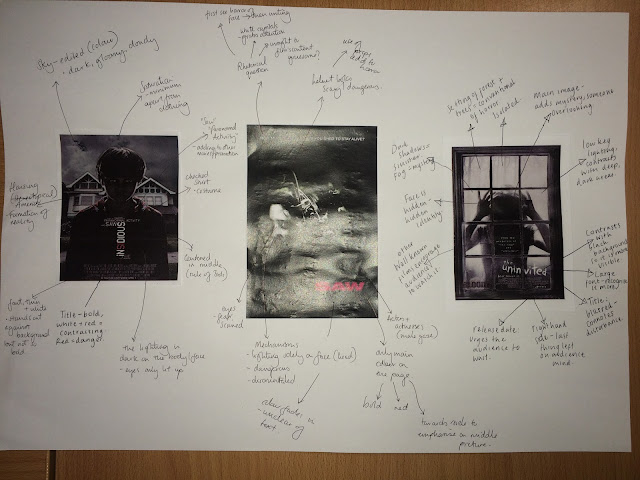This film poster is heavily reliant on Photoshop as it has several different images layered into one e.g. The girl, the hands, the houses in the background and then the fire at the front. The girl is seen in an eye level mid shot of her trying escape the hands dragging her down. The hands holding onto her, have claws, implying that they're monsters or something from the underworld 'trying to drag her back down to hell'.
The main title is in white which stands out against the darker colours in the background. The text above the title gives the audience an insight into what the film is about and the girl in the poster. The sub text of the production companies are all in orange and a thin font which makes it slightly visible to see if the audience were to go closer to see. Also, the addition of a website allows the audience to access more information if they wish which also increases publicity and markets the film as well.
The darker background colours are more focused towards the edges of the poster as opposed to the middle where the lighting is focused on the girl and the hands clawing her down. The lighting is effective as it solely focuses on the central image, showing a girl screaming. Her expressions present the emotions of fear and panic, illustrating to the audience her pain. Without this lighting, it wouldn't make the image stand out as much, making it much less effective for them. Despite this, the houses in the background may be less focused on as the lighting hardly touches it, but it is still visible.
This poster conforms to the horror genre, as the colours are quite dark, and there is one character (the main character) connoting that they are trying to get away from something, which is typically seen in a horror film. It targets the audience as it gives an insight into what the film is about and the type of characters within the film. Overall the image presents a sense of tension as the girl seems to be unable to move due to whatever is dragging her down, and I personally think that the poster is effective for the audience as it seems to include a variety of things.






